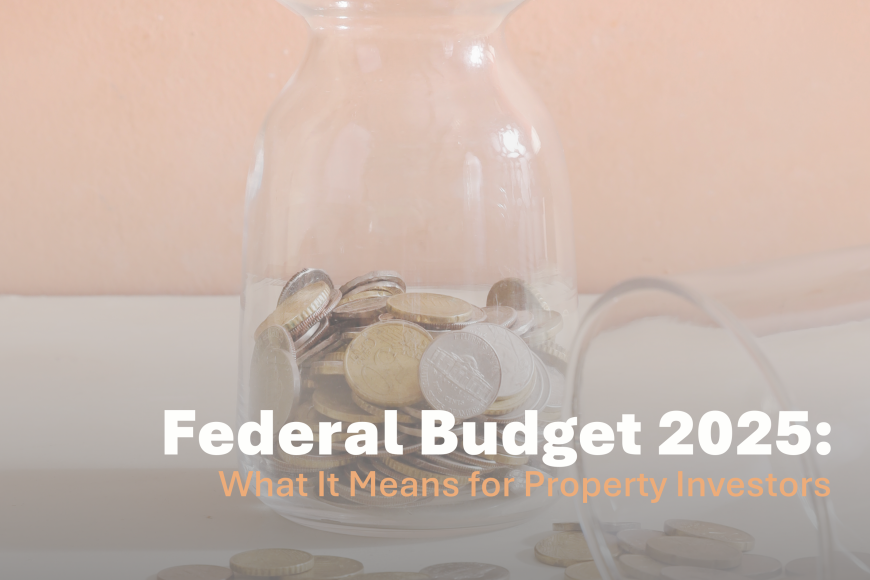The Federal Government’s 2025-26 Budget, released last week, outlines several key initiatives aimed at addressing housing supply and affordability. These measures are set to significantly shape the property market in the years to come. Since 2020, rents have risen by around 37% and house prices by 38.4% (CoreLogic 2025), highlighting the ongoing challenges in the housing market. But what do these new initiatives mean for landlords and investors?
Housing Investment and Construction Goals
The Budget includes an additional $1 billion for housing, bringing the Government’s total commitment to $33 billion. To facilitate its goal to build 1.2 million new homes by 2030, the Government has announced $49.3 million to scale up existing projects for prefabricated and modular housing construction. These homes are built in sections off-site before being assembled at a property. According to the Government, they can be built up to 50% faster than traditionally constructed homes.
Additionally, additional funds have been committed to incentivising state governments to remove red tape that delays modern construction projects. If these initiatives successfully increase housing stock, they could influence rental supply and stabilise vacancy rates in certain markets.
Expanding Assistance for First-Home Buyers
Changes to the Help to Buy shared equity scheme are designed to make homeownership more accessible. Under the revised scheme, eligible buyers can receive Government equity of up to 40% on new homes and 30% on existing homes, reducing their mortgage burden. Income caps for the scheme have increased, and property price limits in WA have risen to $850,000 in Perth and $600,000 in regional areas.
Fewer young people are purchasing homes, which may impact long-term rental demand.
For landlords, this may mean greater competition from first-home buyers in specific market segments. For investors, this could mean greater competition in the sales market. It could also mean more tenants leave the rental market if the numbers are effective, but that remains to be seen.
Limiting Foreign Buyer Activity
From April 1, 2025, foreign buyers will be banned from purchasing existing residential properties for two years. This move aims to curb speculative investment and ensure more homes are available for Australian buyers. Additionally, $8.9 million has been allocated to crack down on foreign land banking, requiring vacant land to be developed within a reasonable timeframe.
This could push foreign purchases into developments. For investors, this could reduce competition in certain segments, potentially opening up more opportunities for local buyers. However, foreign investment has historically played a role in driving new housing development, so the longer-term effects remain to be seen. This could also affect rental supply depending on how much we rely on foreign landlords.
Renting
The Government said it plans to implement a framework called “A Better Deal For Renters,” which will target evictions and rental increases. This will involve meetings with state and territory leaders on regulatory reform.
Finance Minister Katy Gallagher told The Daily Aus that the Federal Government “can’t regulate the rental markets,” but said it will “use its leverage” to negotiate with the states and territories on tenant protections and rental conditions. We saw the start of this with the changes in rental reforms in WA. We are already seeing changes with pet allowances and minor modifications, with many landlords not wanting pets but being overruled by the commissioner.
For landlords, this signals potential regulatory changes that could impact how rental agreements and pricing are managed. It will be essential to stay informed on any developments that may affect lease terms, rental increases, and property management practices.
Social and Affordable Housing Commitments
The Government’s $10 billion Housing Australia Fund is set to deliver around 18,000 social and affordable homes. Additionally, $1 billion has been allocated to crisis and transitional housing for vulnerable populations and additional funding for homelessness support. While these initiatives are necessary to address housing accessibility, they may also impact rental markets in areas where new social housing is introduced.
What Does This Mean for Landlords and Investors?
The 2025-26 Federal Budget presents a mixed bag for property investors. Increased housing supply efforts could ease rental shortages over time, potentially affecting rental yields. The first-home buyer scheme may create stronger competition in lower to mid-range property segments, but foreign investment restrictions could lead to more opportunities for local investors. These plans proposed in the budget support lower-income individuals, first-home buyers, and young people, but they propose nothing particularly good for landlords. We will have to wait to see how it affects the market.
Additionally, the proposed rental framework could introduce new regulations affecting lease terms and rental price adjustments, which may influence investment strategies. Ultimately, if there is a change in government, nothing is guaranteed, and this budget will likely be upended.
The impact on the investor market will depend on how these measures unfold in practice. Landlords should keep an eye on vacancy rates, policy changes, and market trends to ensure they remain competitive in the evolving landscape.
If you’re considering your next investment move or want to discuss how these changes may impact your rental property, our team at Real Property WA is here to help. Contact us today!


